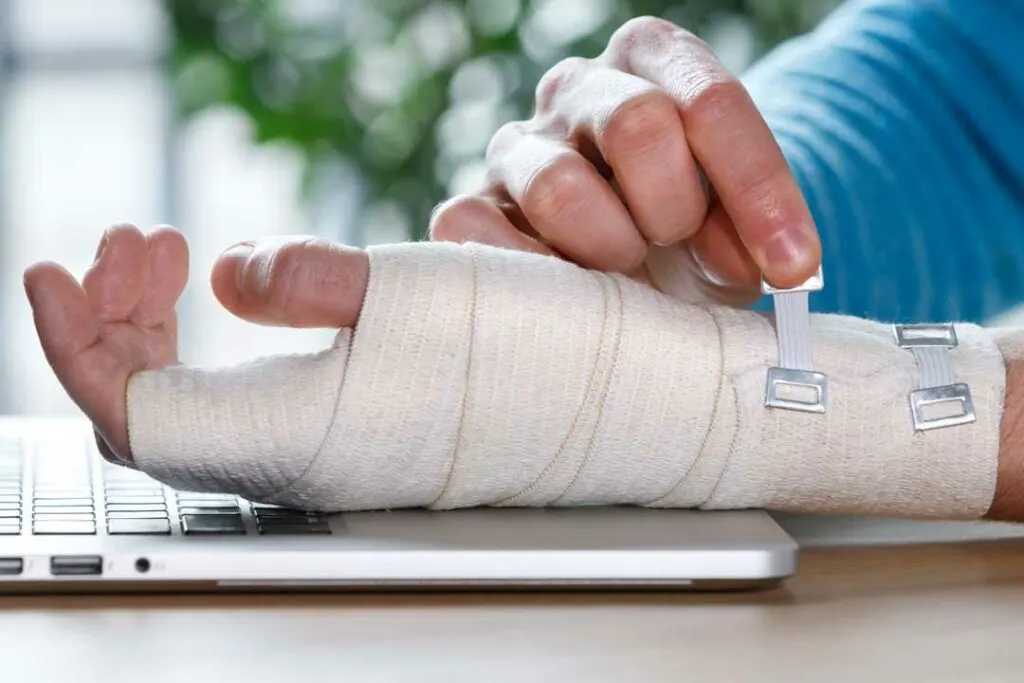Struggling with hand or wrist pain? Discover common conditions orthopedic surgeons treat and learn how to get relief with the right care.
Do you experience hand or wrist pain that affects your daily tasks? From carpal tunnel syndrome to fractures, orthopedic surgeons specialize in diagnosing and treating hand and wrist conditions that impact mobility and comfort. Let’s explore the top conditions they treat and how to find relief.

The hand can be considered one of the most complex parts of the body. There are a lot of muscles, bones, and nerves that play a part in just getting your fingers to move. So when a problem arises, it can be difficult to find the source of the problem as well as a solution that will stick.
To help narrow down why you might be experiencing pain or stiffness, here are five of the most common hand and wrist conditions that orthopedic surgeons treat on a regular basis.
1. Carpal Tunnel Syndrome
One of the biggest orthopedic for hands problems is carpal tunnel syndrome. Carpal tunnel syndrome is frequently identified by sensations of discomfort, including numbness and tingling, as well as occasional “electrical shock” feelings in the thumb, index, middle, and ring fingers.

This syndrome arises from the compression of the median nerve as it passes through the carpal tunnel located at the base of the palm.
Since the tunnel is rigid and does not expand, any increase in pressure within it can lead to nerve compression, developing symptoms such as tingling, pain, numbness, and, in some cases, weakness.
Carpal tunnel can vary in severity. Individuals with mild symptoms may not require surgical intervention for relief and can often benefit from simpler approaches such as rest, bracing, hand therapy, or cortisone injections, along with other conservative treatment alternatives. Conversely, those experiencing moderate to severe symptoms may endure more pronounced pain and dysfunction, which could require surgical intervention.
Methods to prevent carpal tunnel include taking breaks from doing repetitive activities, stretching the muscles in your hand periodically, wearing wrist braces while you’re sleeping, and avoiding any inflammatory foods.
2. Ganglion Cysts
Ganglion cysts are benign masses that frequently develop near joints or tendons, particularly in the wrist area. Although certain ganglion cysts may diminish on their own or react positively to conservative treatments like aspiration or corticosteroid injections, others might need surgical intervention.
The arthroscopic approach to ganglion cyst removal provides the advantage of direct visualization, enabling accurate excision of the cyst while reducing scarring and postoperative pain.

It isn’t really known what causes a ganglion cyst; it grows out of the joint or a lining of the tendon and can look like a tiny water balloon on a stalk. For this reason, it can be difficult to predict who can develop ganglion cysts during their lifetime. However, those who have injured the joints and tendons in their hands tend to be more likely to develop ganglion cysts.
3. Trigger Finger
Trigger finger, clinically known as stenosing tenosynovitis, is a condition affecting the hand, primarily involving the thumb or ring finger. Individuals may experience pain in the palm area, accompanied by a mechanical “triggering” sensation that can be either painful or painless during the flexion and extension of the affected finger.

As the condition progresses, the finger may become locked in a bent position, necessitating manual intervention with the opposite hand to restore its normal position.
This condition typically arises from the thickening of the tendon or the surrounding gliding tissue of the flexor tendons.
The primary treatment for trigger finger involves administering a cortisone injection. If the initial cortisone injection provides relief but symptoms reappear after a few months, a subsequent injection may be considered. However, there is a lifetime limit of two injections per finger, as additional injections may increase the risk of tendon rupture.
In cases where cortisone injections do not yield satisfactory results, a minor surgical procedure can be performed to release the constricting pulley around the thickened tendon to eliminate the triggering.
4. Thumb Basal Joint Arthritis
Also known as thumb carpometacarpal joint arthritis, this condition is a result of the cartilage in the basal joint of the thumb starting to wear down. This can result in pain, stiffness, or swelling when dealing with basal joint arthritis. The symptoms can become severe to the point that a person can have difficulty performing ordinary tasks, such as turning door knobs, opening jars, or turning keys.

There are various nonsurgical options available that may alleviate symptoms, such as thumb braces and cortisone injections; however, it is important to note that these treatments do not provide a cure for arthritis. In cases where these conservative methods become ineffective and thumb pain continues, an orthopedic surgeon can perform a procedure known as “basal joint arthroplasty.”
This surgical intervention involves the removal of the arthritic trapezium bone, followed by the application of a suspension technique to support the remaining thumb structure. This surgical approach is a well-established method for treating basal joint arthritis and has been progressively refined by our skilled surgeons to reduce post-operative discomfort and enhance recovery time.
5. Hand and Wrist Fractures
Perhaps the most serious common condition is a fracture of the hand or wrist. They’re honestly the most common because they can be caused by any physical activity, such as sports or car accidents.
Fractures may be classified as non-displaced, indicating that the bone remains in its original position, or displaced, signifying that the bone has shifted out of alignment.

Certain bones, such as the distal radius, can be repositioned by a physician through a manipulation technique after the area has been anesthetized locally.
In contrast, fractures involving the carpal bones, such as the scaphoid and triquetrum, may require surgical intervention to ensure optimal recovery and proper alignment. Surgical procedures for these bones involve either direct or indirect realignment to restore them to their original configuration, followed by stabilization of the fracture using screws and, in some cases, plates.
Hand and Wrist Conditions: Symptoms, Causes, and Treatments
If you’re experiencing a painful hand condition or injury that you believe requires surgery, speak to your primary care physician as soon as possible to see what options might be best for you. Getting an opinion early not only gets you treatment as quickly as possible, but it also reduces the amount of time you spend in pain, and that’s never good for one’s mental health. Call your doctor today before the pain in your wrist or hand gets worse.
Hand and wrist conditions can impact your daily life, making even simple tasks difficult. Whether you’re dealing with carpal tunnel, arthritis, or a fracture, orthopedic surgeons can help diagnose and treat these issues effectively. Seeking early intervention can reduce pain, improve mobility, and restore quality of life. Don’t wait—consult a specialist today for expert care.

Jessi is the creative mind behind The Coffee Mom, a popular blog that combines parenting advice, travel tips, and a love for all things Disney. As a trusted Disney influencer and passionate storyteller, Jessi’s authentic insights and relatable content resonate with readers worldwide.
